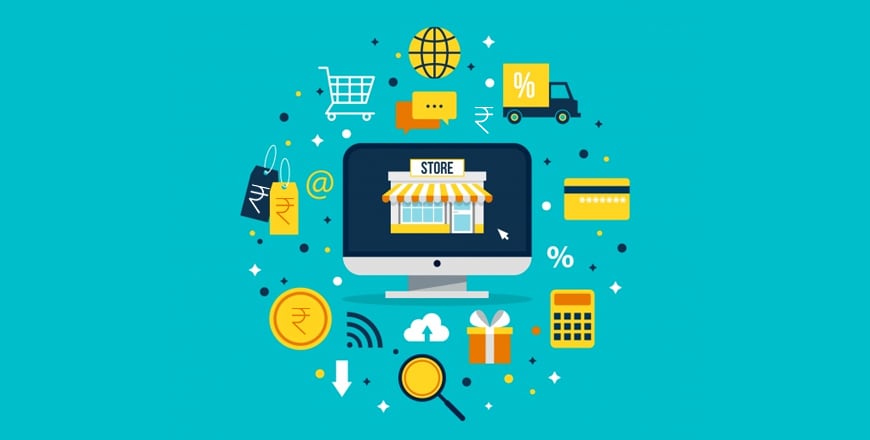Flipkart Goes Head to Head with Amazon Once Again

The US has Black Friday sales, while the Chinese look forward to the Single’s Day sales, but India doesn’t have a dedicated day for bargain hunters yet. Even though a day hasn’t been specified, a few days in September or October may very soon become India’s equivalent of the Black Friday. The festive season from September to November, which includes Dussehra and Diwali, has traditionally been considered as the peak season for retailers. But e-commerce giants Amazon and Walmart-owned Flipkart have given the months an altogether different meaning.
Both the companies organise their respective sales on the same days sometime before Dussehra every year. Amazon has termed its sale period ‘Great Indian Festival’, while Flipkart has named it ‘Big Billion Days’. Besides exciting offers on products ranging from smartphones to shoes, online retailers also engage in a war of publicity. As soon as the sale period gets over, the newspapers are awash with reports of gargantuan sales figures. But the media reports are just a façade for the battle brewing between both the companies to gain supremacy over the Indian online retail market.
Market Dynamics
Online retail doesn’t have a very long history in India but is growing at an unprecedented pace. According to the IT industry body NASSCOM, the Indian e-commerce market has grown from $33 billion in 2017-18 to $38.5 billion in 2018-19. Some analysts predict the e-commerce market to touch $200 billion by 2026, driven millions of new shoppers from hundreds of small towns and cities across the country. But where do things stand currently? Indian eCommerce is essentially a two-horse race, with Amazon and Flipkart in the lead, followed by some smaller but significant players like Paytm Mall, Snapdeal and Ajio.

Source: Livemint
The entry of hybrid digital platforms has also heated up the market. Platforms like Bajaj Markets, have tried to exercise an innovative approach. In contrast to selling fashion and household products with electronics like Flipkart and Amazon, Bajaj Markets focuses on selling mutual funds and digital gold, besides other financial products. On Bajaj Markets, digital payment options like the Bajaj Finserv EMI Card, through which users can shop from 1 million+ products from over 84,200+ partner stores, are also gaining traction. With pre-approved loan limits of up to Rs. 1.5 lakhs, consumers have a plethora of options at their disposal.
A few years ago, the dynamics of the e-commerce market were completely different from the current scenario. Flipkart ignited the e-commerce revolution with its launch in 2007. For almost six years until 2013, it had a free run in the country. But the entry of Seattle-based Amazon changed all that. Backed by virtually unlimited capital at its disposal, Amazon steadily chipped away market share from Flipkart. Amazon has witnessed a swift rise in the country and according to some estimates has grabbed the numero uno position in the Indian market.

Source: Quartz
Flipkart’s Fightback
Even though Flipkart seemed to be on the backfoot before Amazon’s rich experience and huge capital, the entry of Arkansas-based Walmart brought a sense of equality. Last year, the world’s largest retailer Walmart bought 77% stake in Flipkart for $16 billion, valuing the Bengaluru-based company at $21 billion. The opaque n of the Indian start-up sector makes it difficult to access credible sales figures. However, according to media reports, both the retailers together clocked gross sales of $3.5-3.7 billion during the latest six-day shopping festival conducted between Sep 29 and Oct 4. As per Flipkart Group CEO Kalyan Krishnamurthy, the e-commerce major captured a market share of 73% during the six-day sale period. On the other hand, Amazon India head Amit Agarwal claimed that the retailer recorded the highest share of transacting customers and purchases across all marketplaces in India. It cannot be ascertained who held the pole position during the sale period, but it has been confirmed that Flipkart is going neck to neck with Amazon.
Conclusion
The battle for the Indian e-commerce crown has taken an exciting turn with the entry of Reliance Industries backed by the richest Indian Mukesh Ambani. While Flipkart is battling to protect its numero uno position, Amazon is trying hard to reach the top. They will also have to compete with Reliance now, which has announced a plan to offer a mix of online and offline retail supported by Jio’s digital infrastructure. Considering Amazon and Flipkart already have a major chunk of the market, it would be worth the wait to watch how the domestic behemoth takes on the global giants. Bajaj Markets, too, has integrated a host of products with flexible payment options to attract customers. The UPI facility available on the Bajaj Markets App is just one of the stellar options to choose from. You are guaranteed speed, convenience and confidentiality in all of your transactions. With facilities like the linking of multiple bank accounts, a wide network of millions of UPI enabled merchants and direct access to your bank for transaction-related queries, such payment options facilitate safe transactions, anywhere, anytime.
Bajaj Markets, from the house of Bajaj Finserv, is an exclusive online supermarket for all your personal and financial needs. We understand that every individual is different and thus when you plan to achieve your life goals or shop for the gadget of your dreams, we believe in helping you Make it Happen in a few simple clicks. Simple and fast loan application processes, seamless, hassle-free claim-settlements, no cost EMIs, 4 hours product delivery and numerous other benefits. Loans, Insurance, Investment and an exclusive EMI store, all under one roof – anytime, anywhere!
